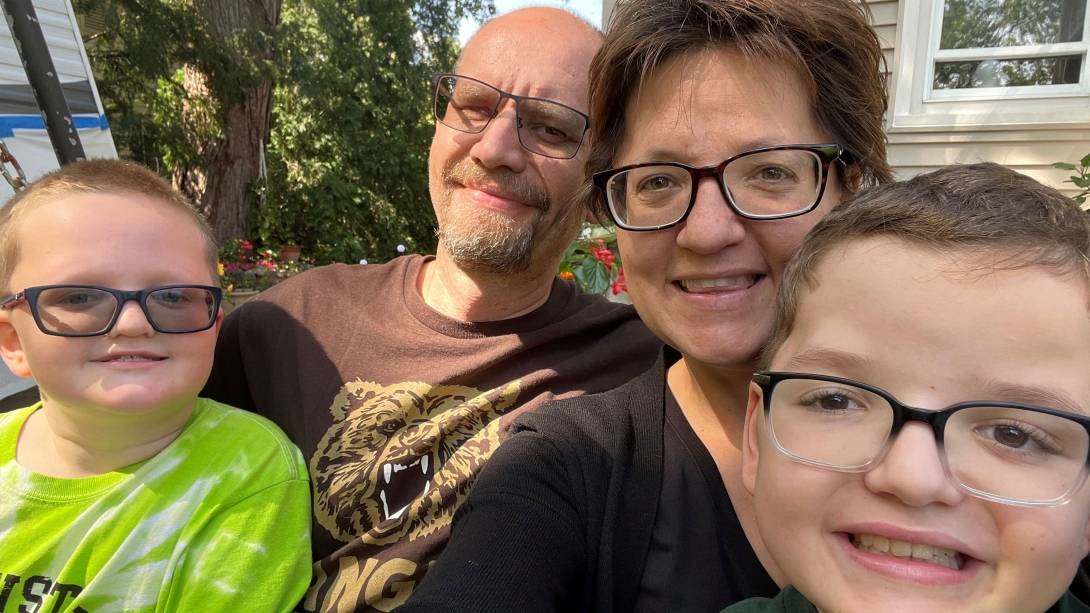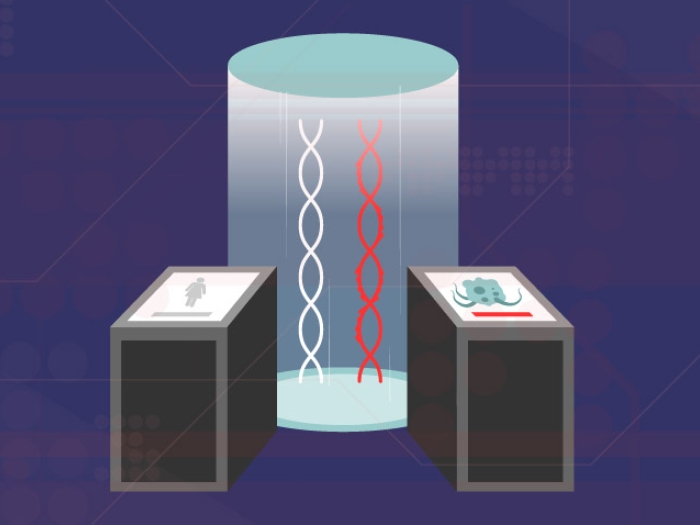Max’s journey includes brain tumor and cranial defect diagnoses between birth and fourth grade
5:00 AM
Author |

Max Oswiecimski’s family thought the worst was behind them after the baby boy’s recovery from a major cranial reconstruction surgery before his first birthday.
But eight years later, nine-year-old Max received another rare and life changing diagnosis: a brain tumor.
“It didn’t feel real,” his mom Allyssa Oswiecimski said. “He had already undergone surgery as a baby, so for this to happen just didn't seem fair. I don't know what would have happened if we hadn't brought him to Mott."
Max was just 10 months old when he needed surgery at University of Michigan Health C.S. Mott Children’s Hospital to correct a rare birth defect affecting his skull shape.
But in 2023, Max faced an even riskier neurosurgery procedure to remove the golf ball sized tumor from his brain.
“There isn’t any correlation between his conditions; it all comes down to pure chance,” said Neena Marupudi, M.D., M.S., a pediatric neurosurgeon at Mott.
Correcting craniosynostosis
Max was barely a month old when his family began noticing he had an abnormally shaped skull. He was displaying signs of craniosynostosis, a birth defect that causes the fibrous joints between the bones of a baby's skull to close before the brain is fully developed.
In Max’s case, he was diagnosed with unicoronal craniosynostosis, which involves the early closure of the suture that runs at the top of the head from ear to forehead. The condition can cause forehead and brow flattening on the affected side.
“My siblings and I all had craniosynostosis, so we were prepared for Max to potentially have it,” said Oswiecimski.
“We weren’t surprised when we got the diagnosis, but it’s always scary when your child has to be operated on.”
In 2014, Max had calvarial reconstruction surgery at Mott, in which his frontal bone was removed, reshaped and replaced back into his skull. The procedure is intended to replace the bone in a more optimal position to normalize head shape and symmetry of the face.
The surgery was a success, and Max recovered swiftly, enjoying a healthy childhood for the next eight years.
Max returns to Mott
But in third grade, Max’s condition began rapidly deteriorating. He was dry heaving and gagging every morning before school. He also had a complete loss of appetite and quickly began losing weight.
“At first, we thought it may have just been acid reflux,” Oswiecimski said. “But the symptoms persisted, and he continued to get worse, so I took him to our local hospital.”
Max was transferred to his established care team at Mott after experiencing severe nausea, vomiting and weight loss. A CT scan showed a large mass on the back part of his brain and an MRI confirmed that it was a lower brainstem tumor.
The tumor was putting pressure on surrounding brain structures, primarily the area postrema. This brainstem structure is responsible for controlling vomiting, explaining Max’s severe symptoms and inability to keep food down.
Within a week, Max’s care team had developed a surgical strategy.
“It was our worst nightmare come to life, especially after what he had been through as a baby,” said Oswiecimski. “But I was grateful that we had gone to Mott, because they gave us the answers that we desperately needed.”

A second complex procedure
Led by Marupudi, the pediatric neurosurgery team performed a craniotomy with tumor resection.
“Max’s surgery was particularly complicated due to the nature of the tumor, which had grown intrinsically from the brainstem,” said Marupudi.
“We had to be incredibly careful to avoid damaging any of the normal brain tissue, which could potentially cause severe neurological deficits.”
But the resection was a success. Max recovered from the procedure without any new deficits, and just 1 to 2% of the tumor remains.
“Despite the rarity of his case, Max has a made a full recovery and is back to living a healthy childhood,” Marupudi said.

Just a few days after the surgery, he returned to his regular diet without getting sick.
“Throughout the entire process, Max had such a positive attitude and never once asked ‘why me?’ ” said Oswiecimski.
“He’s such a brave boy, he held it together better than any of the rest of us.”
Since receiving the surgery, Max continues to come in for check-ups, but the tumor hasn’t grown at all in the months following the resection, and he hasn’t needed chemotherapy or radiation.
He’s back to spending time with his friends and family, enjoying favorite activities like swimming, riding his bike and going on camping trips.
“I’m eternally grateful to Dr. Marupudi for saving my son, but most of all for acting so quickly,” said Oswiecimski.
“Throughout the entire process, she spoke to him like he was human and never tried to hide anything from him. I’ll never take Max anywhere else.”
Sign up for Health Lab newsletters today. Get medical tips from top experts and learn about new scientific discoveries every week by subscribing to Health Lab’s two newsletters, Health & Wellness and Research & Innovation.
Sign up for the Health Lab Podcast: Add us on Spotify, Apple Podcasts or wherever you get you listen to your favorite shows.

Explore a variety of health care news & stories by visiting the Health Lab home page for more articles.

Department of Communication at Michigan Medicine

Want top health & research news weekly? Sign up for Health Lab’s newsletters today!





